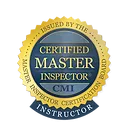FAQs
-
I am purchasing a home that has tested high for radon. How can I be certain the seller will choose a quality contractor over a cheap contractor?
Sellers often pay closer attention to cost than quality when making this decision. Many do not keep the buyer’s best interest in mind. Sharpshooter Radon Mitigation is not interested in cutting corners to be the lowest bid, especially when it comes to your family’s health. We treat your home as if it were our own, aiming to reduce radon to its lowest possible level.
As the buyer, you can insist that we install a personalized mitigation system in your new home so you can be confident in the air you breathe for years to come. Another option is to ask the seller to take some money off the price of the home so that you can have quality radon reduction system installed. Most buyers, once educated, are more than willing to pay the difference to have it done the right way.
-
Will I be provided with a contract?
Yes, Sharpshooter Radon Mitigation will provide a written estimate to be signed before work begins as required by Ohio law.
-
Is there a warranty on materials or workmanship? If so, how long does the warranty last?
Sharpshooter Radon Mitigation warranties materials and workmanship for 10 years. Most radon fans carry a five-year manufacturer’s warranty.
-
How will my radon system be evaluated?
Sharpshooter Radon tests the negative pressures from the test holes once the system is installed and leaves a copy with you. We provide you a free post-mitigation test to verify radon levels have been reduced.
-
What will you do if post-mitigation radon levels are not below the EPA's recommended action level?
With diagnostic testing, we are able to design a system for you based on fact, not guesswork. If a post-mitigation radon test reveals elevated levels, Sharpshooter Radon will recommend additional sealing, suction points, and/or fan upgrades.
-
Can you provide your individual certification number and references?
Sharpshooter Radon would be happy to provide our certification numbers, reviews, and references at your request. All license numbers and expiration dates will be on the report to the client.
-
Is the quoted price guaranteed?
We like to take a phased approach when quoting and designing your radon system. This allows us to potentially save you money by not mitigating areas (such as crawl spaces and garages) that may not be the source of your radon.
-
Are the materials used in the radon mitigation system high-quality?
Yes, Sharpshooter Radon uses only the highest quality materials in all our systems.
For example:
- Our sump basket covers are clear Lexan and can support the weight of an adult.
- All roof flashing carry a 10-year manufacturer’s warranty.
- A majority of the radon fans we use have long-lasting, German-made motors.
-
Why does the pipe have to exhaust one foot above the roof?
The pipe must exhaust one foot above the roof, at least 10 feet above the ground, and 2 feet above any window within 10 feet, according to code. This prevents high radon concentrations from re-entering a building or being inhaled while outdoors on a patio or deck.
-
Do you test for back draft?
Yes. Back drafting is the reverse flow of exhaust gases from fuel-fired appliances (such as water heaters and furnaces) that results in a buildup of carbon monoxide inside your home. Sharpshooter Radon tests for back draft and takes measures such as sealing air leaks to fix most back draft issues. Additional makeup air is sometimes required.
-
Do you clean up after you’ve finished the job?
Yes, Sharpshooter Radon will leave your home as clean if not cleaner than the way we found it.
-
How loud is the radon fan?
Some fans are louder than others. We bring a fan when we visit your home for an estimate so you can hear what it sounds like.
-
Why can’t the radon fan be inside my home?
Indoor radon fans are against code. If the vent pipe or fan were ever to develop a leak on the exhaust side of the fan, it would pump high levels of radon into the home.
-
Where is the best spot to put the radon fan?
Depending on your property, the order of preference is typically:
- Garage attic: It’s less invasive, quieter, protected from outdoor elements, and aesthetically pleasing.
- House attic: It’s protected from outdoor elements and aesthetically pleasing.
- Exterior of the home: It’s less expensive, but results in a shorter fan life, more susceptible to freeze up, and is not aesthetically pleasing.
SERVING NE OHIO
Summit, Portage, Cuyahoga, Medina, Wayne, & Stark County
UPFRONT & HONEST PRICING
Sharpshooter Home Inspections will NEVER try and up-sell or tack on “extras”.
OUR SERVICES
CONTACT US

All Rights Reserved | Sharpshooter Inspections

